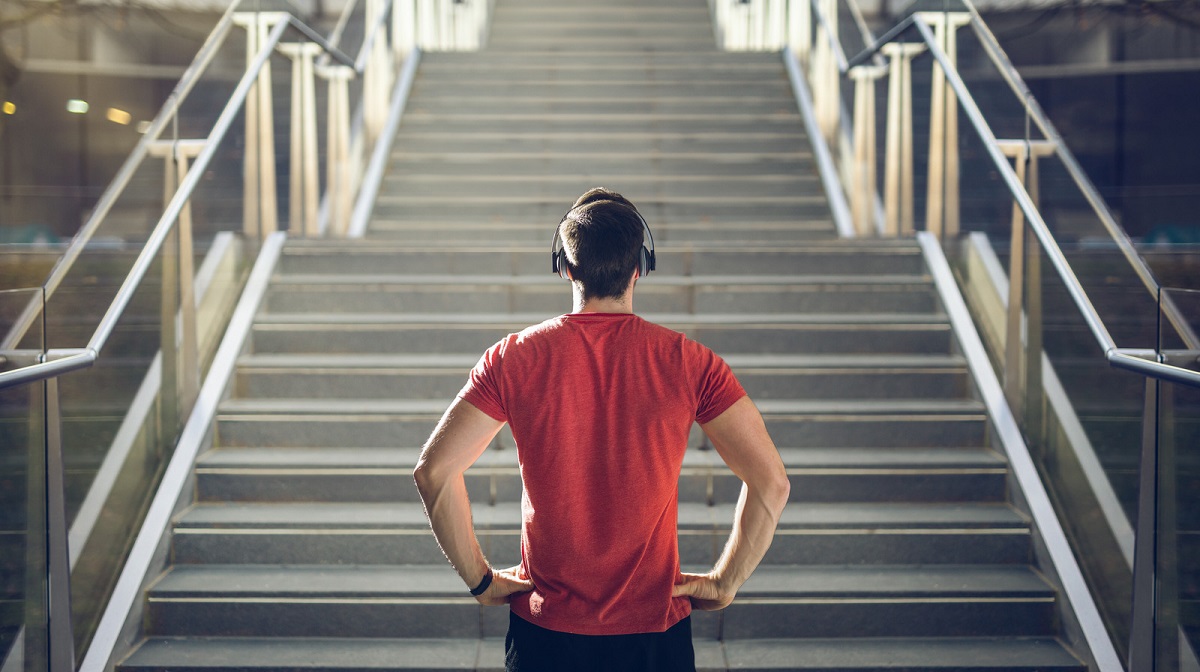

Articles
Why Is Going Up Stairs So Hard
Modified: December 7, 2023
Struggling with climbing stairs? Read our informative articles on why going up stairs can be challenging and find tips to make it easier.
(Many of the links in this article redirect to a specific reviewed product. Your purchase of these products through affiliate links helps to generate commission for Storables.com, at no extra cost. Learn more)
Introduction
Have you ever wondered why climbing stairs can sometimes be so challenging? What seems like a simple task can quickly leave us out of breath, with our legs feeling like jelly. While it may seem like an everyday activity, stair climbing actually involves a complex interplay of anatomy, muscles, biomechanics, and various other factors.
In this article, we will delve into the science behind why going up stairs can be so hard. We will explore the anatomy of stairs, the muscles involved in stair climbing, the biomechanics of stair ascending, and the factors that affect the difficulty in climbing stairs. Additionally, we will discuss how aging impacts stair climbing ability, the risks of injuries associated with stair climbing, and some essential safety considerations to keep in mind. Finally, we will provide you with practical tips to improve your stair climbing ability.
So, let’s unravel the mystery behind the challenge of climbing stairs and gain a deeper understanding of why this seemingly simple activity can be so physically demanding.
Key Takeaways:
- Stair climbing involves a complex interplay of anatomy, muscles, and biomechanics. Factors like physical fitness, body weight, and joint health can affect the difficulty level. Understanding these factors can help improve stair climbing ability and reduce the risk of injuries.
- Aging can pose challenges to stair climbing due to changes in muscle strength, joint health, and balance. Regular exercise, modifications to the environment, and professional guidance can help older adults improve their stair climbing ability and enhance overall mobility.
Read more: Why Are Guava Seeds So Hard
Anatomy of Stairs
Before we delve into the intricacies of stair climbing, it’s important to understand the basic anatomy of stairs themselves. Stairs typically consist of a series of steps, each consisting of a horizontal tread and a vertical riser. The tread is the part of the step that we step on, while the riser is the vertical portion between two consecutive treads.
The height and width of the steps can vary, but they are typically designed to adhere to specific building codes and guidelines to ensure safety and comfort. The height of the riser is known as the riser height or rise, while the horizontal depth of the tread is known as the tread depth or run.
Understanding the anatomy of stairs is crucial because it directly impacts the biomechanics of stair climbing. The height of the riser and the depth of the tread determine the effort required to ascend the stairs. In general, the taller the riser and the shorter the tread, the more challenging it is to climb the stairs.
In addition to the height and depth of the steps, the overall design of the stairwell, railing system, lighting, and handrails also play a significant role in the ease and safety of stair climbing. It’s important that stairs are properly designed and maintained to minimize the risk of accidents and injuries.
Now that we have a basic understanding of the anatomy of stairs, let’s explore the muscles that are involved in the process of stair climbing.
Muscles Involved in Stair Climbing
Climbing stairs engages a variety of muscles throughout the lower body, including the calves, quadriceps, hamstrings, glutes, and core muscles. Let’s take a closer look at each of these muscle groups and their role in the stair climbing process:
Calves: The calf muscles, specifically the gastrocnemius and soleus, play a crucial role in pushing off and lifting the body weight during stair ascent. These muscles contract to extend the ankle, allowing us to propel ourselves upward.
Quadriceps: The quadriceps muscles, located at the front of the thighs, are extensively activated during stair climbing. The vastus lateralis, vastus medialis, vastus intermedius, and rectus femoris work together to straighten the knee joint and lift the leg up with each step.
Hamstrings: Situated at the back of the thighs, the hamstrings consist of three muscles: the biceps femoris, semimembranosus, and semitendinosus. While the quadriceps are responsible for extending the knee, the hamstrings play a crucial role in flexing the knee and decelerating the leg during the downward phase of stair descent.
Glutes: The gluteal muscles, including the gluteus maximus, medius, and minimus, are activated during stair climbing to provide stability to the pelvis and hips. These muscles work in conjunction with the quadriceps and hamstrings to lift the leg and propel the body forward.
Core Muscles: The muscles of the core, including the abdominals, obliques, and lower back muscles, provide stability and balance during stair climbing. They work to keep the torso upright and prevent excessive forward or lateral leaning.
By engaging these muscles, stair climbing becomes a comprehensive lower body workout that helps build strength and endurance over time. However, the effort required to climb stairs and the specific muscles engaged can vary depending on the individual’s fitness level, body composition, and overall health.
Now that we understand the muscles involved in stair climbing, let’s explore the biomechanics of stair ascending and how our body moves to conquer each step.
Biomechanics of Stair Ascending
Stair ascending involves a complex interplay of movements and forces that allow us to conquer each step. Understanding the biomechanics of stair climbing can provide insights into why it can be challenging for some individuals. Let’s explore the key biomechanical processes involved:
Foot Placement: As we approach a step, our lead foot needs to accurately judge the height and depth of the tread. Our brain sends signals to our leg muscles to adjust our foot placement accordingly, ensuring that the foot rests comfortably on the step.
Weight Transfer: Once the lead foot is properly placed on the step, our body weight needs to be transferred from the trailing leg to the lead leg. This weight transfer requires coordination of the core muscles and a shift in the center of gravity to maintain balance.
Force Generation: With the weight transferred to the lead leg, the muscles of the lower body generate the necessary force to lift the trailing leg off the ground and propel the body upward. The quadriceps, hamstrings, calves, and glutes work together to provide the force needed to push off and ascend the step.
Stabilization: As we ascend the step, our body needs to maintain stability to prevent falls or imbalance. This requires activation of the core muscles, which provide stabilization and keep the torso upright.
Step Clearance: Each step requires our leading leg to clear the height of the riser. This involves a combination of hip flexion, knee extension, and ankle dorsiflexion to lift the leg and clear the step. The quadriceps and hip flexors play a crucial role in this process.
Balance Restoration: After clearing the step, our trailing leg needs to smoothly transition onto the next step. This requires precise coordination and balance restoration to ensure a seamless flow of movement.
During stair ascending, this series of biomechanical processes is repeated for each step, demanding energy and effort from the muscles involved. The combination of accurate foot placement, weight transfer, force generation, stabilization, step clearance, and balance restoration allows us to climb stairs efficiently.
Next, we will explore the factors that can affect the difficulty of stair climbing and make it more challenging for some individuals.
Factors Affecting Difficulty in Climbing Stairs
While stair climbing may seem straightforward, several factors can influence the difficulty level of this seemingly simple activity. These factors can vary from individual to individual and may include:
Physical Fitness: Your overall physical fitness level plays a significant role in how easily you can climb stairs. Individuals who are physically active and have good cardiovascular endurance, leg strength, and muscle endurance will find stair climbing less challenging compared to those who lead a more sedentary lifestyle or have lower fitness levels.
Body Weight: The amount of body weight you carry can impact the difficulty of stair climbing. Excess body weight puts additional strain on the muscles and joints, making it harder to lift your body up each step. Losing weight can make stair climbing more manageable and reduce the risk of developing joint-related issues.
Joint Health: The health and condition of your joints, particularly the knees and ankles, can affect your ability to climb stairs. Individuals with arthritis, previous injuries, or joint-related conditions may experience pain, stiffness, or limited range of motion, making stair climbing more challenging.
Cardiovascular Health: Stair climbing is a cardiovascular exercise that requires the heart to pump blood efficiently to provide oxygen and nutrients to the working muscles. Poor cardiovascular health or underlying heart conditions can make stair climbing more strenuous and increase the likelihood of fatigue or shortness of breath.
Balance and Coordination: Maintaining balance and coordination as you ascend stairs is crucial for safety and ease of movement. Individuals with impaired balance or coordination due to age, medical conditions, or other factors may find it more difficult to climb stairs confidently.
Environmental Factors: The design, condition, and layout of the stairs themselves can impact the difficulty of climbing. Factors such as the height and depth of the steps, uneven surfaces, poor lighting, or lack of handrails can increase the challenge and pose potential safety risks.
It’s essential to consider these factors and understand that the difficulty level of stair climbing can vary among individuals. If you find stair climbing particularly challenging, it may be helpful to address any underlying health or fitness issues, modify your environment for safety, and consider exercises or physical therapy to improve your strength and mobility.
Next, we will explore the impact of aging on stair climbing ability and some considerations to keep in mind for older adults.
To make going up stairs easier, focus on engaging your quadriceps and glutes to push yourself up, and use the handrail for support and balance. Take it one step at a time and avoid rushing.
Read more: Why Won’t My Dog Go Up The Stairs
Aging and Stair Climbing Ability
As we age, several factors can impact our ability to climb stairs. The natural aging process can lead to changes in muscle strength, joint flexibility, balance, and overall physical fitness, making stair climbing more challenging for older adults. Here are some key considerations:
Muscle Strength: With age, there is a gradual loss of muscle mass and strength, known as sarcopenia. This can affect the ability to generate sufficient force to lift the body against gravity while climbing stairs. Weakness in the leg muscles, particularly the quadriceps and calves, can contribute to difficulty in stair climbing.
Joint Health: Joint stiffness, reduced flexibility, and the presence of arthritis are common age-related issues that can affect stair climbing. Stiffness in the knees and ankles can limit range of motion and make it harder to ascend or descend the stairs smoothly. Pain or discomfort in the joints can also impact overall mobility and stair climbing ability.
Balance and Coordination: Aging can lead to a decline in balance and coordination, increasing the risk of falls during stair climbing. Reduced proprioception and slower reflexes can impact the ability to maintain stability while navigating the steps. Older adults may require more time and caution when climbing stairs to ensure safety.
Cardiovascular Health: Age-related changes in the cardiovascular system, such as reduced lung capacity and decreased cardiac output, can make stair climbing more taxing on the heart and lungs. Older adults may experience breathlessness and fatigue more quickly while climbing stairs, requiring more frequent rest breaks.
While aging can bring challenges to stair climbing ability, it’s important to note that regular physical activity and strength training exercises can help mitigate these effects. Engaging in exercises that target leg strength, balance, and cardiovascular health can improve overall fitness and make stair climbing easier.
Additionally, modifications to the stairs and the environment can enhance the safety and accessibility for older adults. Installing sturdy handrails on both sides of the stairwell, ensuring proper lighting, and reducing the step height can make stair climbing more manageable and reduce the risk of falls.
If you are an older adult experiencing significant difficulty with stair climbing, it may be beneficial to consult with a healthcare professional or a physical therapist. They can provide personalized guidance, exercises, and strategies to improve your stair climbing ability and enhance your overall mobility and independence.
Next, we will explore the risks associated with stair climbing and some essential safety considerations to keep in mind.
Injury Risks and Safety Considerations
While stair climbing is a common activity, it carries a certain level of risk, especially if proper safety precautions are not taken. Understanding the potential injury risks and implementing safety considerations is crucial to ensure a safe and injury-free stair climbing experience. Let’s explore some of these risks and considerations:
Falls: Falls are a significant risk associated with stair climbing. Factors such as uneven steps, inadequate lighting, slippery surfaces, or lack of handrails can increase the likelihood of falls. Older individuals and those with balance or mobility issues are particularly vulnerable. It is essential to ensure the stairs have proper grip, are well-maintained, and have reliable handrails for stability.
Overexertion: Stair climbing can be physically demanding, especially if you’re not accustomed to regular physical activity. Overexertion can lead to muscle strains, joint sprains, or even heart-related issues. It’s crucial to listen to your body, take breaks as needed, and gradually increase your stair climbing intensity and duration over time.
Improper Footwear: Wearing improper footwear while climbing stairs can increase the risk of slips and falls. Choose shoes with good traction and ankle support to provide stability and prevent accidents. Avoid shoes with high heels or slippery soles, as they can make it more difficult to maintain balance.
Carrying Heavy Loads: Carrying heavy loads while climbing stairs not only increases the strain on your muscles and joints but also affects your balance. It’s best to distribute the weight evenly and, if possible, make multiple trips to ensure your safety and prevent potential injuries.
Overall Fitness and Health: Individuals with underlying health conditions or physical limitations need to be mindful of their stair climbing abilities. Consulting a healthcare professional before attempting strenuous stair climbing activities is advisable, especially if you have heart, respiratory, or musculoskeletal issues.
Use of Assistive Devices: If you require the use of assistive devices such as canes, walkers, or crutches, ensure they are in good condition and properly adjusted. Take your time and be cautious when navigating the stairs to prevent accidents.
By being aware of these injury risks and implementing appropriate safety measures, you can significantly reduce the chances of accidents or injuries while climbing stairs. It’s important to prioritize your safety and make necessary adjustments based on your physical abilities and environmental conditions.
Next, we will provide you with some tips to improve your stair climbing ability and make the process easier and more efficient.
Tips for Improving Stair Climbing Ability
If you find stair climbing challenging or want to enhance your ability to tackle stairs with ease, here are some useful tips to improve your stair climbing ability:
1. Strength Training: Incorporate strength training exercises into your fitness routine, focusing on the muscles involved in stair climbing. Exercises such as squats, lunges, calf raises, and leg presses can help build strength in your lower body, making stair climbing easier.
2. Cardiovascular Exercise: Engage in regular cardiovascular activities such as brisk walking, cycling, or swimming to improve your stamina and endurance. This will enable you to climb stairs without getting excessively winded or fatigued.
3. Balance and Core Exercises: Perform exercises that enhance your balance and core stability, as these are essential for maintaining stability while ascending or descending stairs. Try activities like yoga, tai chi, or specific balance exercises recommended by a physical therapist.
4. Gradual Progression: Gradually increase the intensity and duration of your stair climbing sessions to allow your body to adapt. Start with shorter stair sets and fewer repetitions, and then gradually progress to longer sets and more repetitions over time.
5. Take Mini Breaks: If you find yourself getting winded or fatigued during stair climbing, don’t push yourself too hard. Take short breaks on a landing or halfway point to catch your breath and rest your muscles before continuing.
6. Maintain Proper Posture: Keep your back straight, shoulders back, and head aligned with your spine while climbing stairs. This not only helps maintain balance but also reduces strain on your back and prevents unnecessary muscle tension.
7. Use Handrails: When available, make use of handrails for stability and support. They can provide extra confidence and security, especially for individuals with balance issues or limited mobility.
8. Incorporate Interval Training: Integrate interval training into your stair climbing routine by alternating between periods of faster stair climbing and slower recovery periods. This can help improve cardiovascular fitness and build strength and endurance.
9. Stay Hydrated: It’s essential to stay hydrated before, during, and after stair climbing. Drink water to replenish lost fluids and keep your muscles and joints properly hydrated.
10. Consult a Professional: If you have concerns about your stair climbing ability or any underlying health conditions, consult with a healthcare professional or a physical therapist. They can provide personalized guidance, assess your specific needs, and recommend appropriate exercises and modifications.
By implementing these tips and gradually building your strength and endurance, you can improve your stair climbing ability and conquer stairs with confidence.
Finally, let’s conclude our journey by summarizing the key points we’ve discussed.
Conclusion
Stair climbing may seem like a simple activity, but it involves a complex interplay of anatomy, muscles, biomechanics, and various other factors. Understanding the intricacies of stair climbing can help shed light on why it can be challenging for some individuals and how to improve stair climbing ability.
We explored the anatomy of stairs and how the height and depth of steps can impact the effort required to ascend. We also discussed the muscles involved in stair climbing, including the calves, quadriceps, hamstrings, glutes, and core muscles, highlighting their roles in generating force and providing stability.
The biomechanics of stair ascending revealed the intricate movements and forces involved in lifting the body against gravity, including foot placement, weight transfer, force generation, stabilization, step clearance, and balance restoration.
Various factors can affect the difficulty level of stair climbing, such as physical fitness, body weight, joint health, cardiovascular health, and balance and coordination. We emphasized the importance of considering these factors when assessing stair climbing ability.
Aging can pose additional challenges to stair climbing due to changes in muscle strength, joint health, balance, and cardiovascular fitness. We discussed how regular exercise, modifications to the environment, and consultation with healthcare professionals can help older adults improve their stair climbing ability.
We also explored the injury risks associated with stair climbing, such as falls, overexertion, improper footwear, carrying heavy loads, and the importance of safety considerations like maintaining overall fitness and health, using assistive devices properly, and ensuring a safe stair environment.
Finally, we provided practical tips for improving stair climbing ability, including strength training, cardiovascular exercise, balance and core exercises, gradual progression, taking breaks, maintaining proper posture, utilizing handrails, incorporating interval training, staying hydrated, and seeking professional guidance.
By implementing these tips and understanding the factors that affect stair climbing ability, individuals can develop the strength, endurance, balance, and confidence to navigate stairs with ease and reduce the risk of injuries.
Remember, stair climbing is not only a physical challenge but also a journey towards better health and fitness. So, whether you’re climbing a flight of stairs at home, at work, or in a public place, embrace the opportunity to improve your physical well-being and conquer those steps with confidence.
Frequently Asked Questions about Why Is Going Up Stairs So Hard
Was this page helpful?
At Storables.com, we guarantee accurate and reliable information. Our content, validated by Expert Board Contributors, is crafted following stringent Editorial Policies. We're committed to providing you with well-researched, expert-backed insights for all your informational needs.
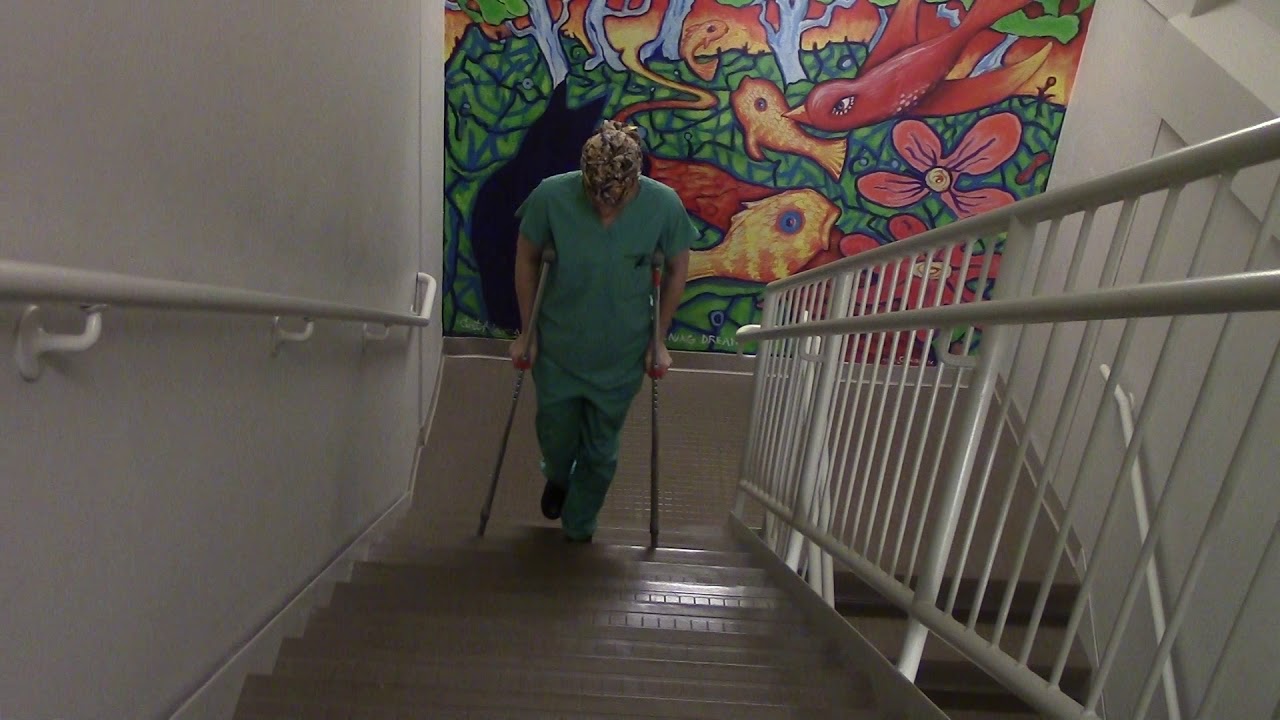

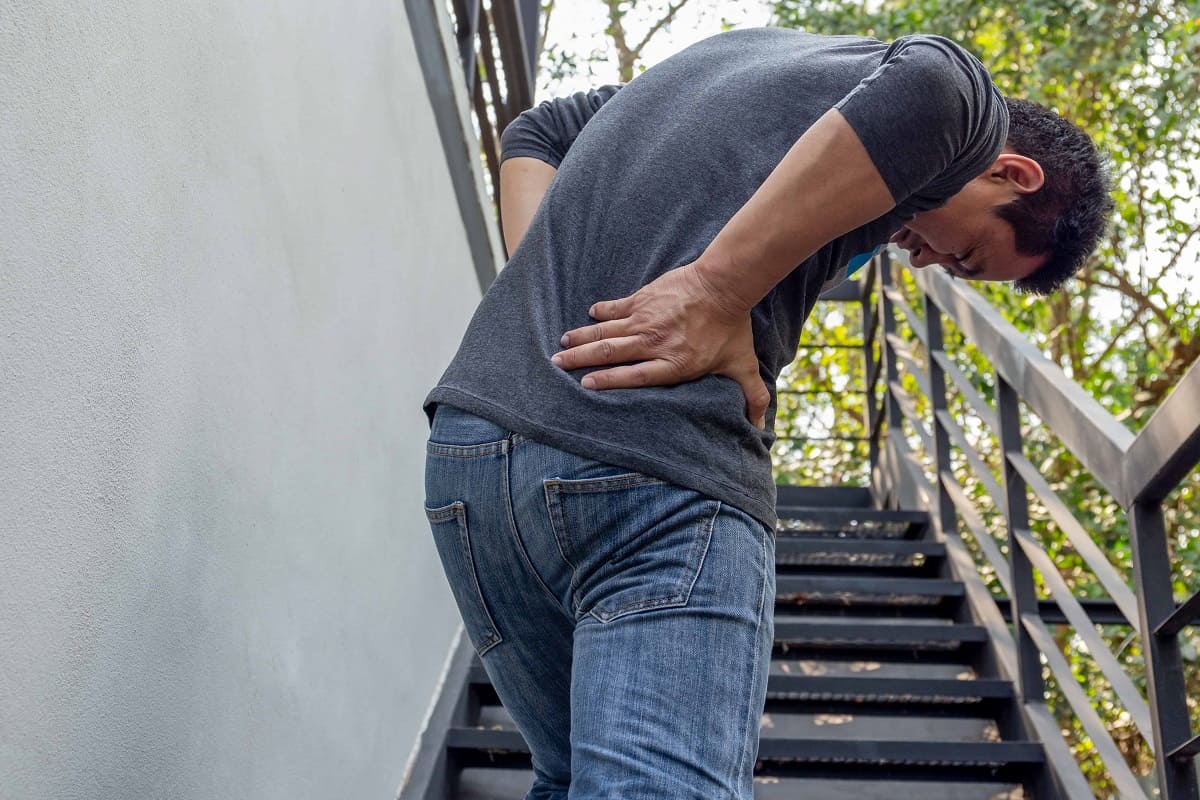
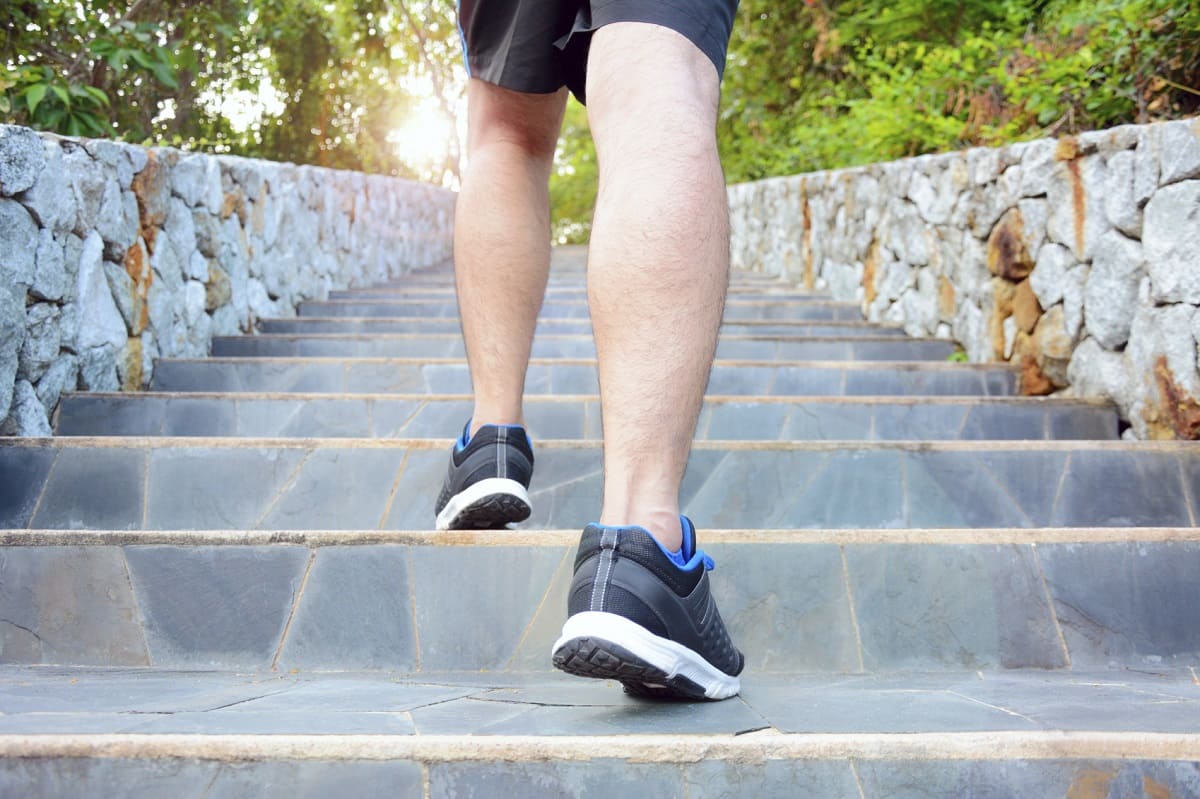


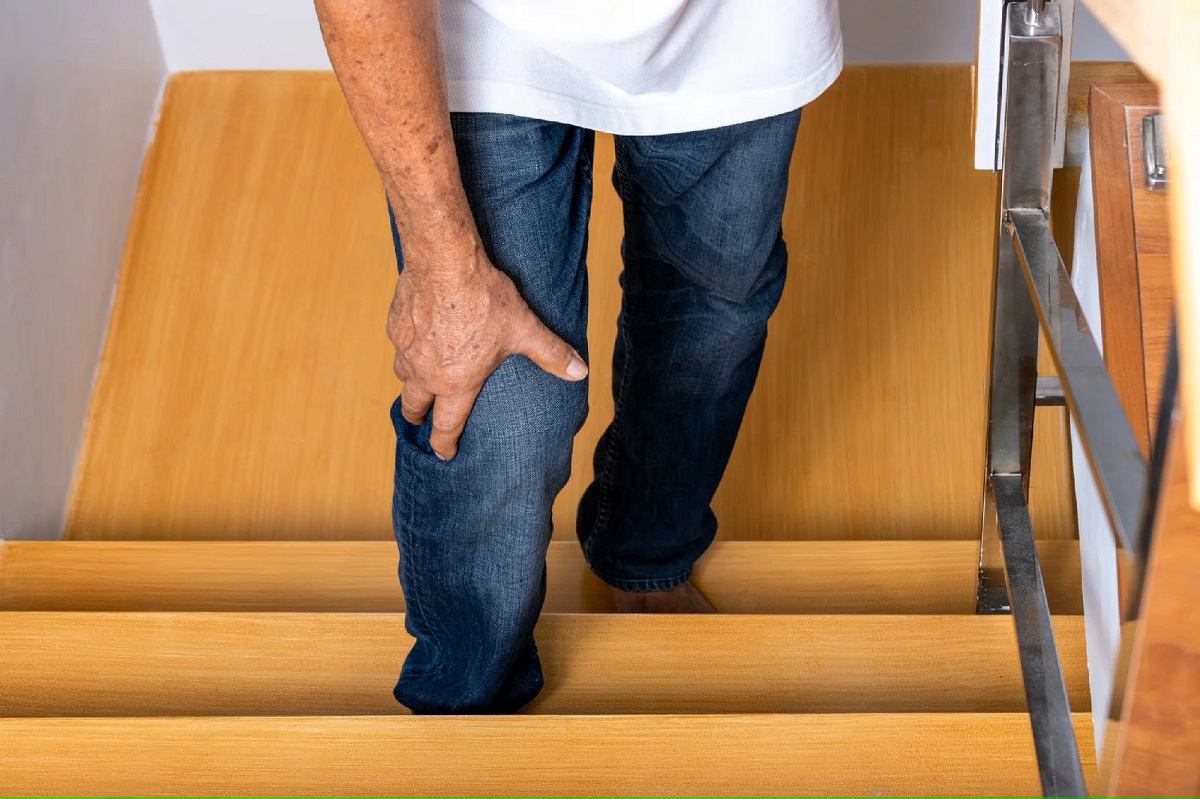








0 thoughts on “Why Is Going Up Stairs So Hard”